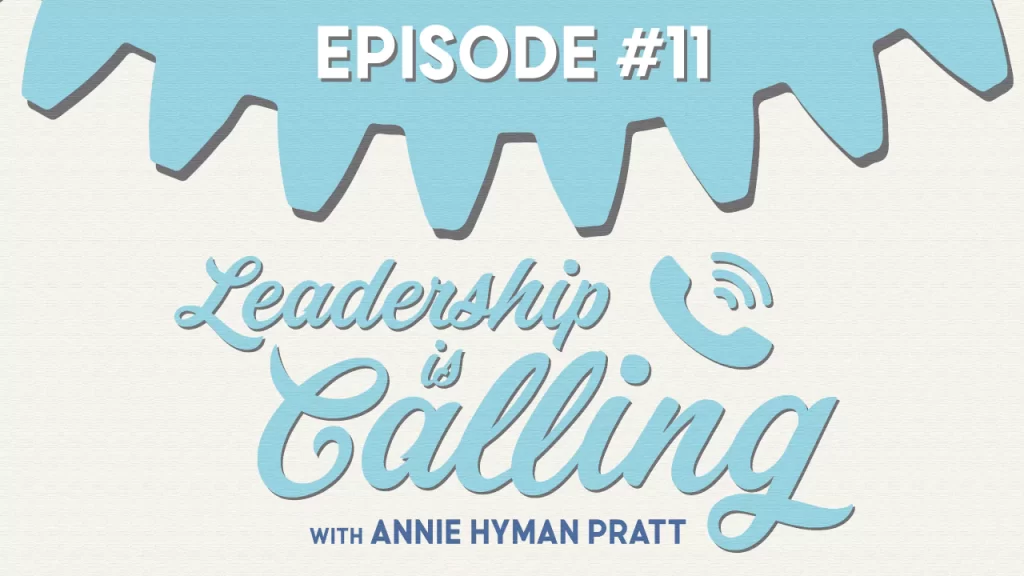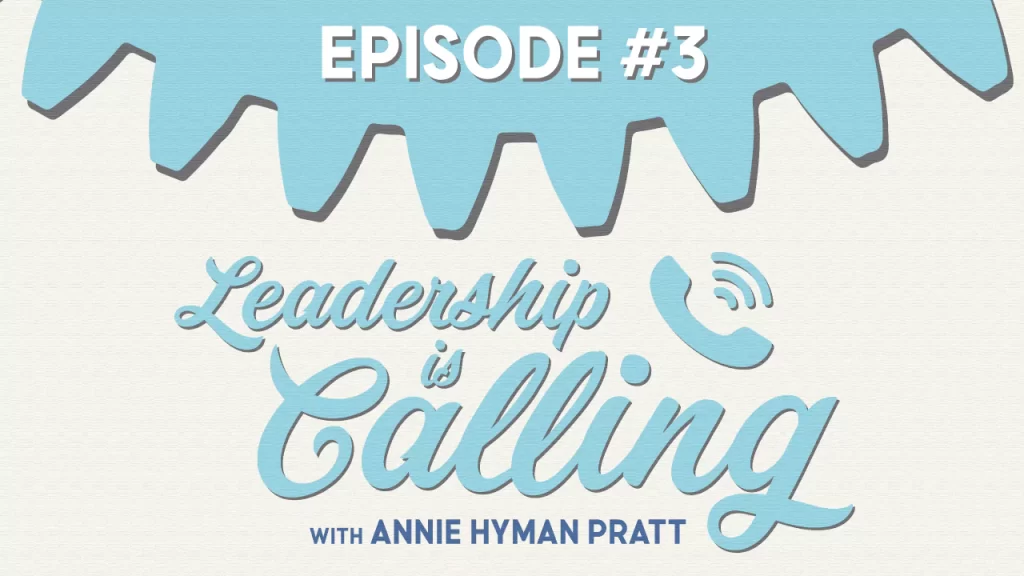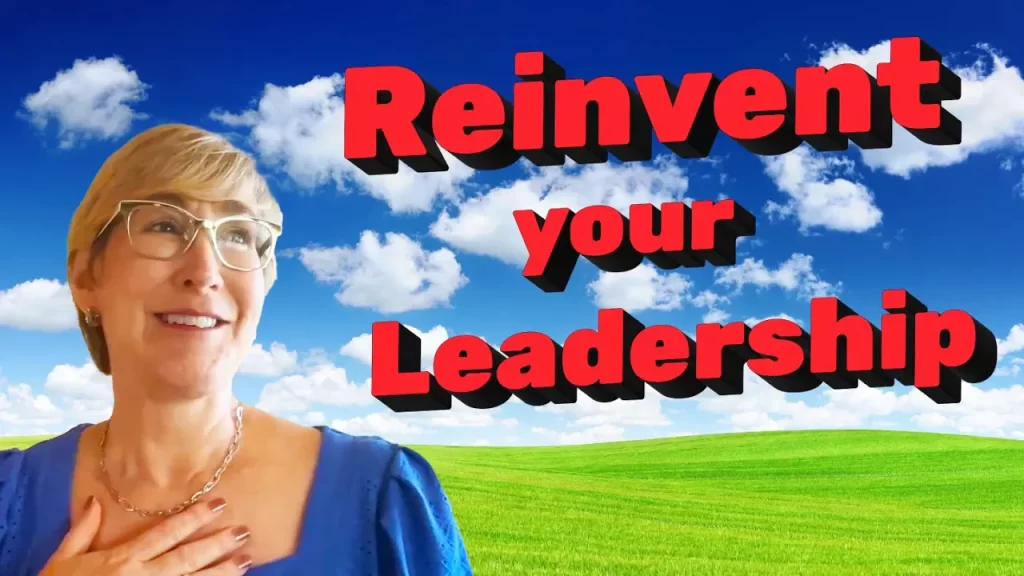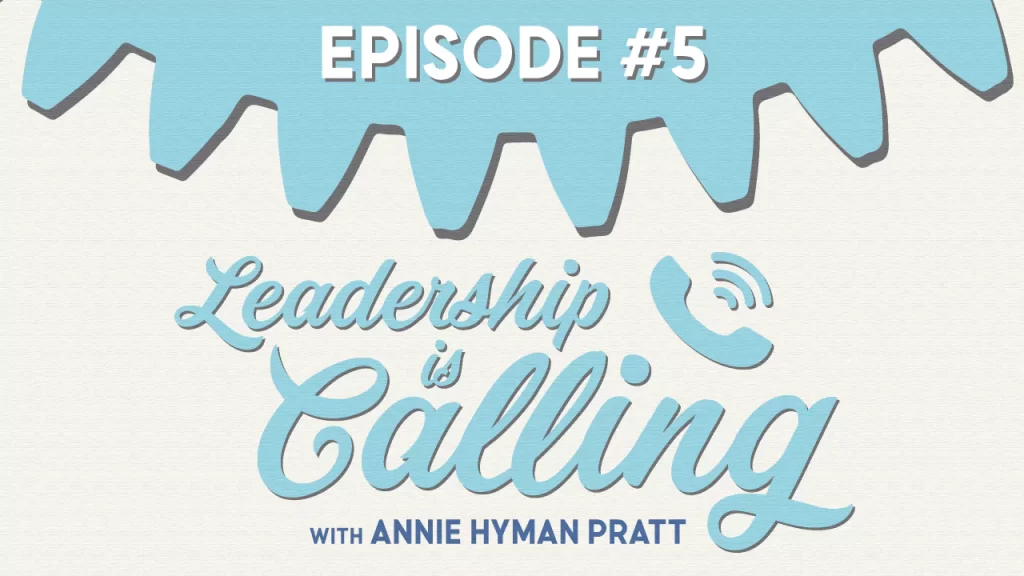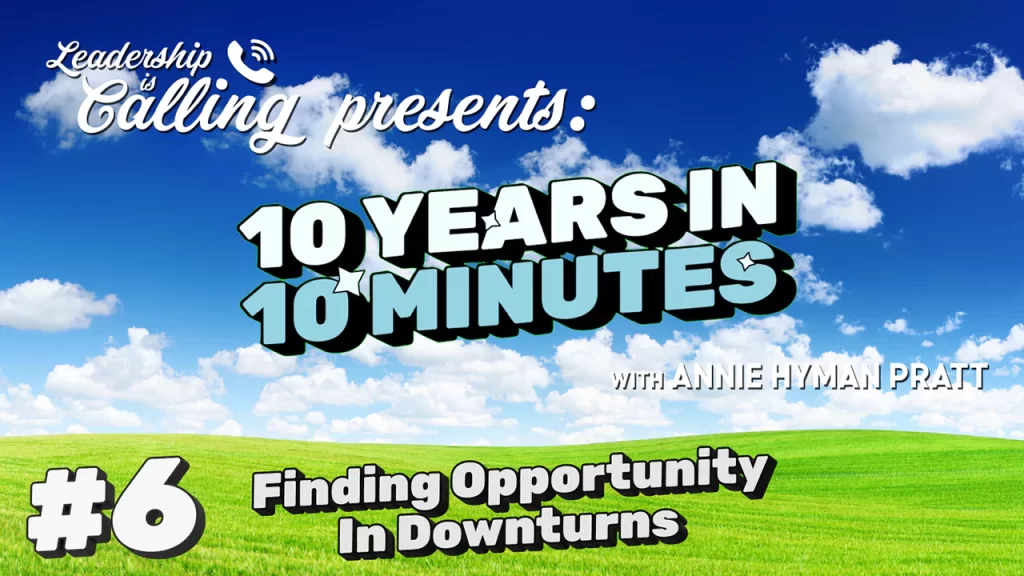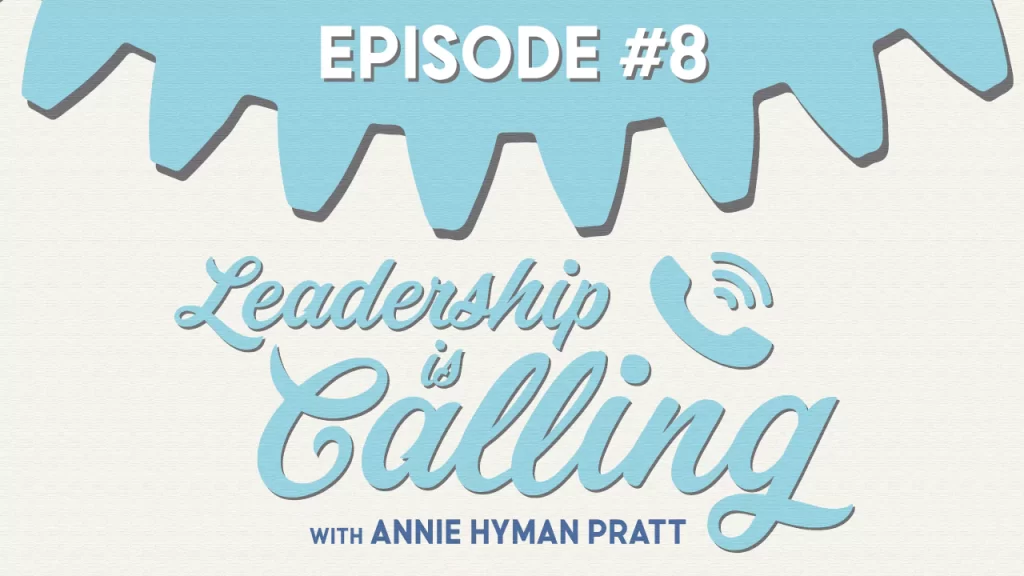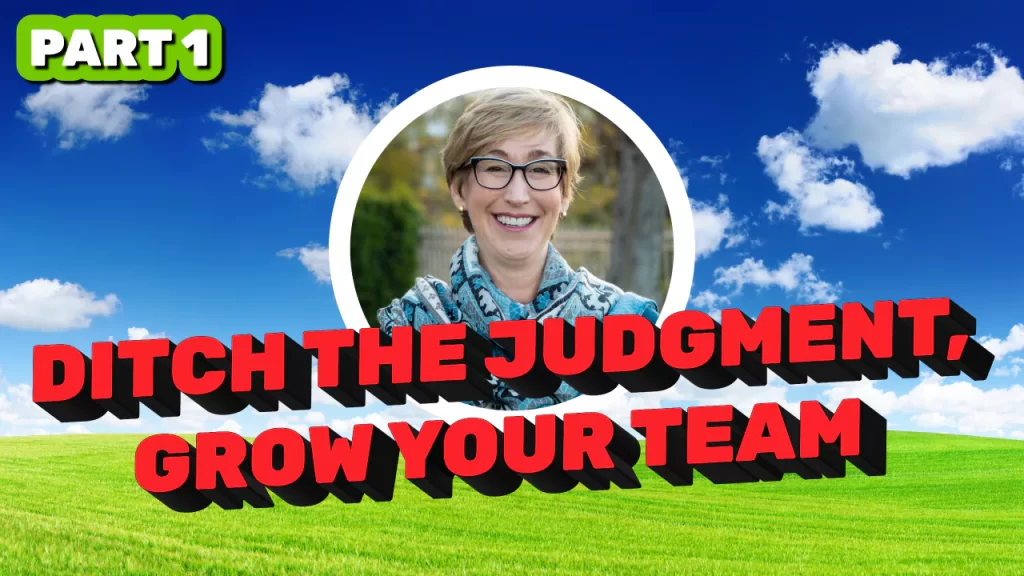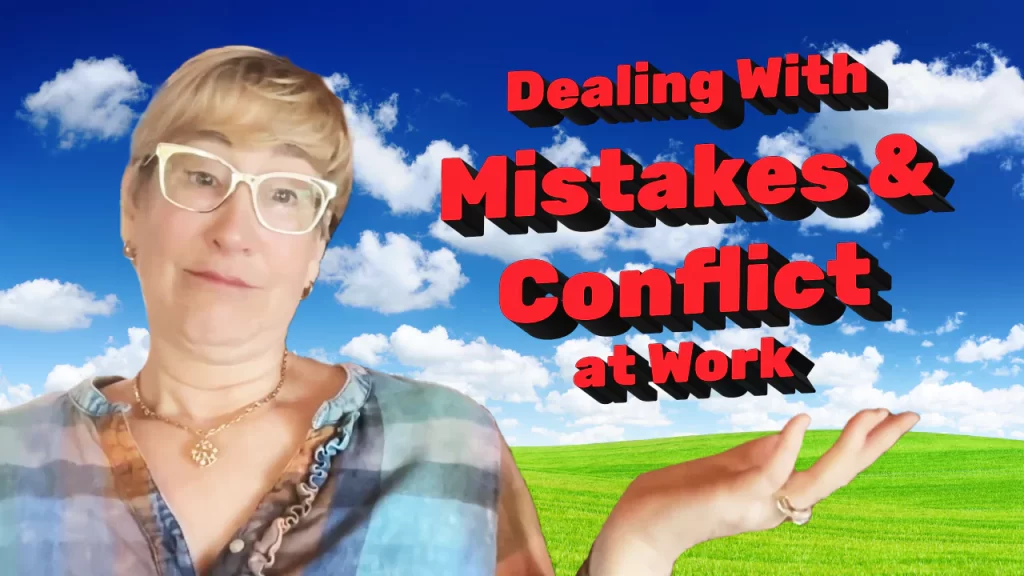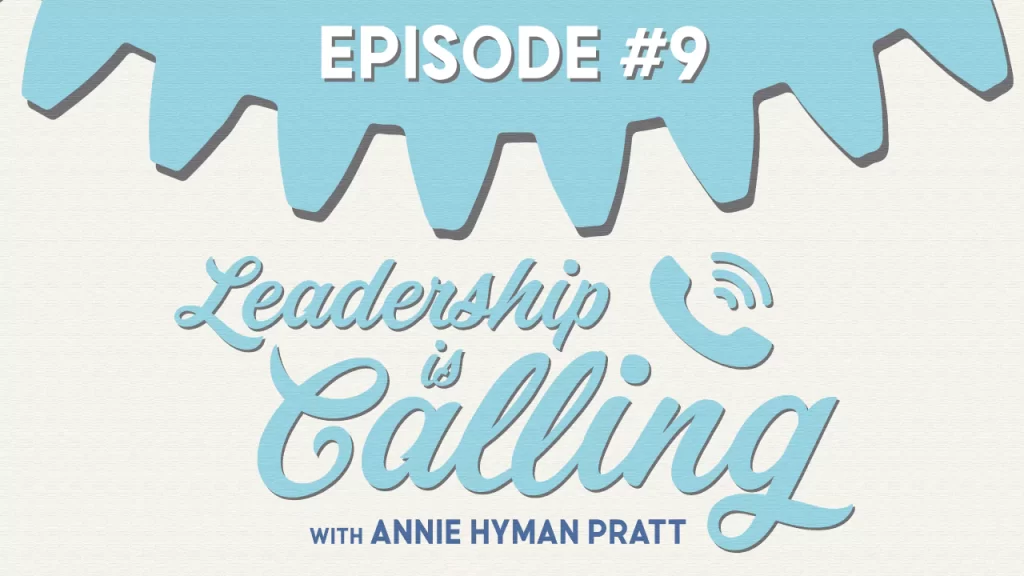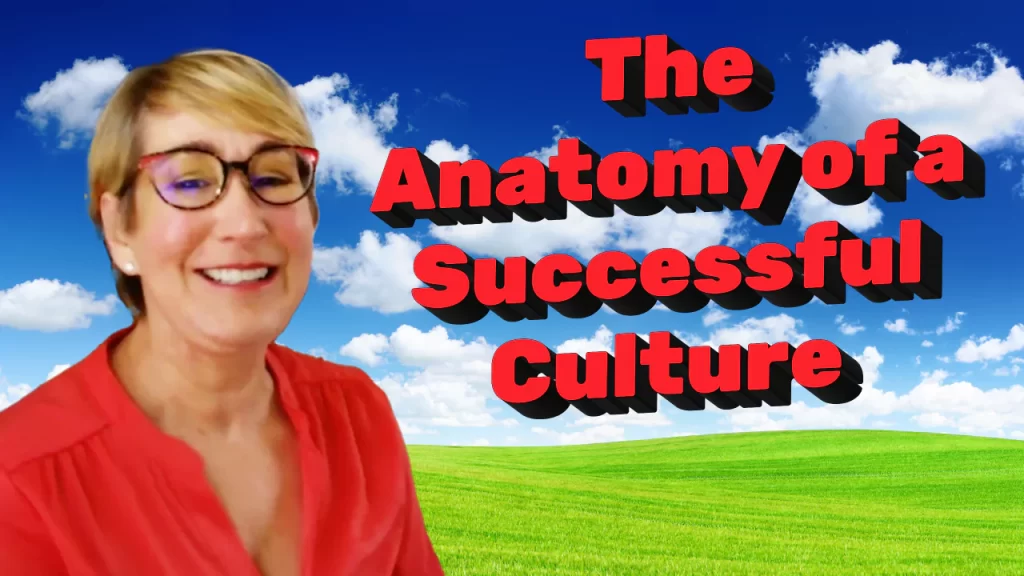EPISODE #16: Project Charters Get Things Done
Leadership is Calling Episode #16: 10 Years in 10 Minutes Series #5
Annie Hyman Pratt
- Description
- Transcript
Project Charters Get Things Done
“The thing that I really want you to get about projects is that a project is not a bunch of tasks.” -Annie
This episode covers how leaders often skip the important step of creating a project charter to align objectives and prevent issues. Project Charters force thinking about purpose, outcomes, challenges and operations before taking action. They help prevent frustration, wasted time and resources. They are a key tool for project success.
Annie discusses how project charters can help you accomplish goals in your business.
Key Points
- Leaders do project management even if it’s not their job title. Things change, requiring projects.
- Most important part of project management is organizing your thinking before taking action.
- Make a project charter to define purpose, outcomes, challenges, operations.
- Charters prevent wasted time and frustration. Tasks come after charter thinking.
Related Resources
Leadership Skills: The Business Part
Leadership Development Articles: How to Define Company Goals | How to Create Clear Measurable Outcomes
Downloadable Leadership Tool: The Key Basics of Agreements

Auto-Generated Transcript – unedited version
Project Charters Get Things Done
One of the things that took me more than 10 years to learn as a leader, interestingly enough, that I know I can share and have you receive in the next 10 minutes, is an understanding of project management—how it really works—that I believe, well, was life-changing for me as a leader.
Project management is something that we, as business leaders and entrepreneurs, tend to think of as a unique role that one person needs to do in an organization. Here’s the very first thing: every leader on the planet is going to do some project management. The reason is that things keep changing in businesses. Things keep changing even if your role doesn’t involve projects, like doing a big client project or something. Even if your role is something like sales, there are going to be times where something needs to change in sales, and then we need to think about it like a project—like a project—because anytime you have something where you need a real new or big change result, it’s going to be a project.
I think of projects as having a beginning, an end, and a result. So if you’re in sales and, for example, you need to do a better job of projecting what your sales are going to be in the next six months, you may decide that you all need to put in place a new sales pipeline—that you need to track your prospects better. Some of you might already do it. You may have to change how you track your prospects, even if you know there are people who were doing prospect tracking in spreadsheets for a very long time, and now they use those real CRM systems, right—like Salesforce.
Okay, so moving your spreadsheet to Salesforce is a project, and the end result is that you’re no longer using spreadsheets. You now use Salesforce. That’s the end result that you’re going for. And that end result, on its own, is actually not the important thing. I’m going to come back to that in a second because the thing about projects—and like I said there’s, you know, I almost think of it like, you know not knowing how to do a project as a leader is kind of like not knowing how to do calculus as a mathematician.
So you really do need to know how it works because you do them. You do them.
Okay, so here’s the thing about projects: We think of them as an end result, and this is the thing that I really want you to get—that took me 10 years to really learn. The thing that I really want you to get about projects is that a project is not a bunch of tasks. The tasks come after thinking. And the very first thing that you need in project management is to organize your thinking, to organize why you’re doing this project, to organize what you know, define what it needs to achieve to be successful, to break it down into deliverables or sub-projects.
Some projects are really big. They need sub-projects. Think ahead of time what are going to be the challenges and can we do anything about those? Define how we are going to run this project. Is this something that we, you know, we need to only take five minutes in our weekly meeting to check in on? Or is this something that we need a meeting every two weeks because this thing is going to be a year-long project?
Those are things that we need to define upfront before we start putting tasks into a project management system or into a spreadsheet.
Project management, when you’re the leader, the most important part is to define—to define and organize and get onto paper your thinking. We call that process a project charter. It’s making a project charter, and it’s all about initiating a project, setting it up so that it could actually succeed. Because if I go back to my Salesforce example for a second here, the thing about changing your prospecting and putting it into Salesforce instead of a spreadsheet is that’s not the thing we care about.
The end result we care about is not that we have everything working in Salesforce. The end result that we care about is that we are having more prospects convert into sales. That’s what we care about.
So as we’re going along and doing this project, that’s the thing that we need everybody to keep thinking about. And if we don’t do a project charter upfront, we have to rely on remembering to tell them every five minutes during the project, like “Don’t forget. Don’t forget what we’re really going for here is that we convert more of these prospects to sales. That we, you know, that right now we have a 10% conversion rate, and we’re thinking that when we get Salesforce it’s going to be 20%.”
Okay, so as we’re doing the project, then everybody involved needs to be thinking that so that when they come across something that might not be as expected—like “Hey, turns out that everybody in the field who needs to use Salesforce needs an iPhone, so if this is a company who can’t afford to have everybody have an iPhone, that’s going to be a problem that won’t allow part of the sales team to actually get the end result, the benefit.”
We really, really want people to understand that when you’re doing a project, what you’re really going for. And to do that, you really need to set it up well; otherwise what happens is people put their tasks into a spreadsheet or into a project management system—there are many—and as they’re going along, they’re like “Oh no, we didn’t think about this, and now we need to re-decide that.” And “Oh no, maybe we shouldn’t be in Salesforce. Maybe we should be in this other thing like Infusionsoft or some other CRM.”
If we don’t do that thinking upfront, we will be confronted with awful choices later. We will waste a bunch of time and energy, and we definitely don’t want to do that.
So the thing about projects that I, you know, want everybody to have taken these 10 minutes to walk away with and know—you’ve got to be able to as a leader initiate a project by using a charter process to get clear on the outcomes, to get clear on the deliverables, to talk about the things that are important in operating that project before you actually start putting tasks into a spreadsheet. Because if you start on the tasks without having done the thinking, you will waste a ton of time and resources and be super frustrated. That’s what I wanted to share today.
To learn more about this episode’s topic, pick up a copy of my book The People Part.

